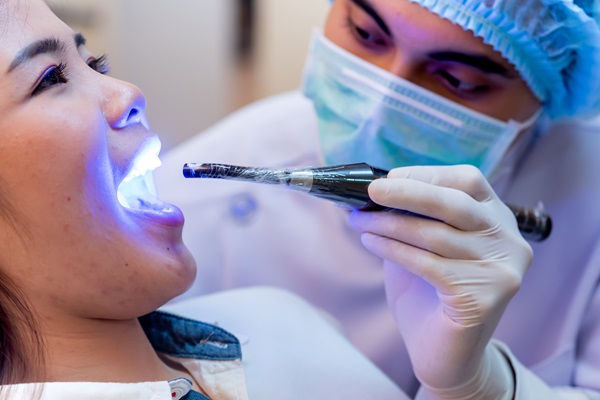What to Know About LANAP Peridontal Disease Treatment

LANAP®, which stands for laser-assisted new attachment procedure, is an innovative approach to treating periodontal disease, specifically a severe form known as periodontitis. The LANAP® protocol is approved by the Food and Drug Administration (FDA) and has a high rate of success in regenerating lost bone inside of the jaw that is related to periodontal disease.
Important things to know about LANAP® for treating periodontal disease
When compared to traditional periodontal disease treatments, there are notable benefits of the LANAP protocol. Since many patients are at first unfamiliar with what LANAP is, this review discusses important information about the innovative treatment solution to help you feel more comfortable if this form of surgical therapy is recommended.
LANAP® is used to treat severe forms of gum disease
LANAP is a form of surgical therapy, so it is still considered more invasive than other in-office periodontal procedures such as scaling and root planing. Subsequently, it is typically recommended for treating a more severe form of gum disease (periodontitis), especially if there are symptoms such as gum recession, deep gum pockets, and bone loss inside of the jaw.
LANAP® encourages the natural regeneration of bone around your teeth
LANAP protocol works by encouraging the body to regenerate bone tissue around your teeth. Traditional methods of treating bone loss include a grafting procedure, and LANAP may be a way to avoid the need for a bone graft by allowing for the natural healing and regeneration of the jawbone.
LANAP® is a non-invasive treatment solution
LANAP uses advanced laser technology to treat periodontal disease. This means there are no painful and loud dental instruments that are used during the treatment process, and the patient is not likely to experience much (if any) discomfort during the procedure.
The recovery is much quicker than with traditional methods
Since the LANAP protocol is less invasive than traditional methods of periodontal disease treatment, the recovery time is much faster. With traditional methods, the recovery time can take several weeks, whereas most patients make a full recovery and can return to normal activity within a few days with LANAP.
There is less bleeding, pain, and sensitivity with LANAP®
Another benefit of the non-invasive manner of LANAP is that there is much less bleeding, pain, and sensitivity during the procedure, which allows for a much easier and comfortable experience for the patient.
There are risks to leaving periodontal disease untreated
It is important to treat periodontal disease to avoid the loss of teeth and worsening gum and jawbone complications. Many who choose LANAP are able to restore their periodontal health and strengthen the support of their teeth.
Schedule a consultation to learn more about LANAP® periodontal disease treatment
Would you like to schedule a consultation to discuss LANAP periodontal disease treatment? If so, then call our professional dental team today for answers to any questions you may have and to set up a convenient time to come in and meet with our team, during which we can discuss LANAP and how it can benefit you.
Request an appointment here: https://www.summitperioimplants.com or call Summit Periodontics & Dental Implants at (908) 219-6664 for an appointment in our Summit office.
Check out what others are saying about our services on Yelp: Read our Yelp reviews.
Related Posts
Lip fillers, or dermal fillers, offer more than volume—they can complement dental work and frame the smile with balance and harmony. For patients seeking a polished aesthetic result, this treatment serves as a supportive tool that enhances the overall appearance of the mouth. Periodontists who focus on oral soft tissue health understand how facial features…
Curious about bone grafting? Read on to learn more about this procedure. Periodontal health is a crucial aspect of one's oral health, but gum disease and tooth loss can compromise it and cause jawbone loss. Bone grafts are increasingly used in periodontal treatment as they can rebuild and strengthen the jawbone. The procedure can improve…
Periodontists can diagnose and treat conditions affecting the gums and cheeks. The soft tissues of the mouth are vulnerable to bacterial infection. Understanding how these dental professionals help patients can ease your mind for your next procedure. If you want to know how periodontists can help your gums and cheeks, here are the details.Periodontists concentrate…
Learning more about what Botox® is and how it works to treat problems in dental patients is the first step one needs to take when interested in using this FDA-approved treatment. It is important to understand that dental professionals must first undergo detailed training in order to offer their patients this medical option.Some people may…
